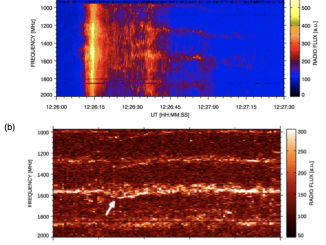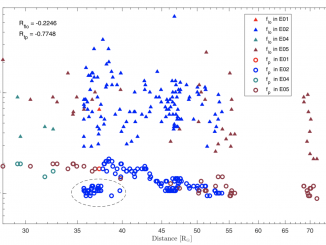Narrowband Spikes Observed during the 2013 November 7 Flare
by M. Karlicky et al.
Narrowband dm-spikes belong to the most interesting fine structures of solar radio bursts that are closely connected to primary flare energy-release processes (Krueger 1979) and observed in some cases near the Type III burst starting frequency. They occur in clouds of narrowband bursts with a typical duration less than 100 ms, frequency relative bandwidth 1-3 %, and brightness temperature up to $10^{15}$ K. For them several radio emission models were suggested. Earlier models suggested […]


